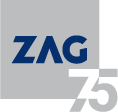
Slovenian Dravske Elektrarne Maribor d.o.o. (DEM), the company that operates eight hydropower plants on the Drava River, is facing sedimentation problems. Larger amount of sediment is annually accumulated in the hydro reservoirs, which need to be appropriate, handled. Because of the lack of space in the Drava valley for sludge deposition and newly imposed regulations, there is an urgent need for new solutions in sediment management.
Current treatment methods aiming to restore the normal function of contaminated sediment are similar to those used for soil and include physical, chemical, and biological methods. Another successful remediation method is solidification/stabilization, where heavy metal pollutants are physically encapsulated in a solid matrix. Encapsulation involves the mixing of the contaminated soils or sediments with other materials and producing building products such as geopolymers (alkali activated materials - AAMs), cement clinker, bricks, lightweight aggregates, concrete, etc. The contaminated soil/sediment becomes immobile and thus prevents contamination of the surrounding materials. Although a lot of research all over the world was already conducted in applying marine and river sediments in brick and AAMs, the River Drava sediments were not examined as a raw material yet. But given its known composition and continuous availability, this material is a perfect candidate as a major component for the manufacturing of sustainable final products.
The key objective of the proposed READY4USE project is to (i) develop a new procedure for removal of heavy metals from River Drava sediment and (ii) develop new building materials (bricks and AAMs) by using River Drava sediment raw material. Partners in the project consortium (i.e. Slovenian National Building and Civil Engineering Institute, Faculty of Chemistry and Chemical Technology University of Ljubljana, and company Dravske Elektrarne Maribor) have devised a systematic work-plan consisting of R&D activities that will fully encompass the entire development procedure of the novel sediment remediation process and construction materials production, from design to the actual production of the prototype.
The main scientific contribution of the work will be in defining the most successful remediation processes of sediments by using new ecological friendly biosurfactants, and the design of optimal mixtures for brick and AAMs, where many parameters will need to be studied in order to define the most influential ones. These innovative processes and products will provide the knowledge, which will be applicable also to other waste holders worldwide.
All researched technologies will be beside technical parameters, assessed also from an environmental point of view by analysis of life cycle assessment (LCA), which will contribute to the interdisciplinarity of the READY4USE project.

